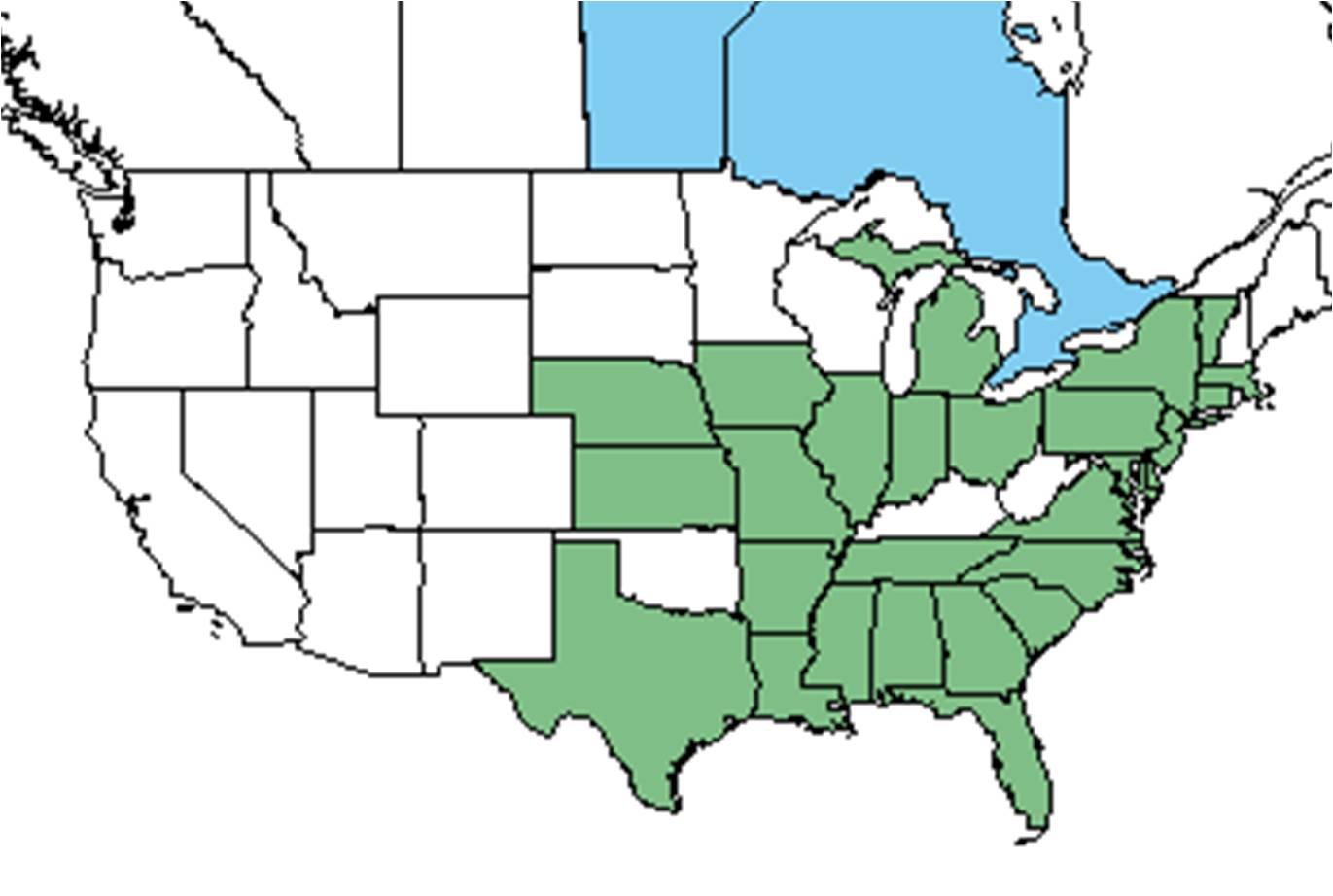Difference between revisions of "Argemone mexicana"
(→Distribution) |
(→Distribution) |
||
| Line 28: | Line 28: | ||
==Distribution== | ==Distribution== | ||
| − | It is found across the southeast from peninsular Florida<ref name="Weakley">Weakley, Alan S. Flora of the Southern and Mid-Atlantic States: Working Draft of 21 May 2015. University of North Carolina Herbarium (NCU). PDF. 464.</ref> | + | It is found across the southeast from peninsular Florida<ref name="Weakley">Weakley, Alan S. Flora of the Southern and Mid-Atlantic States: Working Draft of 21 May 2015. University of North Carolina Herbarium (NCU). PDF. 464.</ref>, north to Pennsylvania, and west to Arizona. It is also found in Hawaii.<ref> Hardin, J.W., Arena, J.M. 1969. Human Poisoning from Native and Cultivated Plants. Duke University Press, Durham, North Carolina.</ref> |
| − | , north to Pennsylvania, and west to Arizona. It is also found in Hawaii.<ref> Hardin, J.W., Arena, J.M. 1969. Human Poisoning from Native and Cultivated Plants. Duke University Press, Durham, North Carolina.</ref> | ||
==Ecology== | ==Ecology== | ||
Revision as of 14:27, 9 June 2021
Common names: Mexican pricklypoppy; Mexican poppy
| Argemone mexicana | |
|---|---|

| |
| Photo by Keith Bradley, Atlas of Florida Vascular Plants | |
| Scientific classification | |
| Kingdom: | Plantae |
| Division: | Magnoliophyta - Flowering plants |
| Class: | Magnoliopsida - Dicotyledons |
| Order: | Papaverales |
| Family: | Papaveraceae |
| Genus: | Argemone |
| Species: | A. mexicana |
| Binomial name | |
| Argemone mexicana L. | |

| |
| Natural range of Argemone mexicana from USDA NRCS Plants Database. | |
Contents
Taxonomic notes
Synonym: none.[1]
Varieties: none.[1]
Description
A description of Argemone mexicana is provided in The Flora of North America.
Distribution
It is found across the southeast from peninsular Florida[2], north to Pennsylvania, and west to Arizona. It is also found in Hawaii.[3]
Ecology
Habitat
In the Coastal Plain, A. mexicana can be found in loamy soils of mesic woodlands and in disturbed areas, such as sandy roadsides and citrus groves.[4][2] It is native to peninsular Florida.[2]
Phenology
It flowers from April to May, and sometimes in August.[2][5]
Pollination
The following Hymenoptera families and species were observed visiting flowers of Argemone mexicana at Archbold Biological Station:[6]
Apidae: Apis mellifera
Halictidae: Halictus poeyi
Halictidae: Lasioglossum puteulanum
Conservation, cultivation, and restoration
Cultural use
Photo Gallery
References and notes
- ↑ 1.0 1.1 Weakley, A.S. 2015. Flora of the southern and mid-atlantic states. Working Draft of 21 May 2015. University of North Carolina at Chapel Hill, Chapel Hill, North Carolina.
- ↑ 2.0 2.1 2.2 2.3 Weakley, Alan S. Flora of the Southern and Mid-Atlantic States: Working Draft of 21 May 2015. University of North Carolina Herbarium (NCU). PDF. 464.
- ↑ Hardin, J.W., Arena, J.M. 1969. Human Poisoning from Native and Cultivated Plants. Duke University Press, Durham, North Carolina.
- ↑ Florida State University Robert K. Godfrey Herbarium database. URL: http://herbarium.bio.fsu.edu. Last accessed: October 2015. Collectors: Loran C. Anderson, Leon Neel, R.A. Norris, Cecil R. Slaughter. States and Counties: Florida: Leon, Jackson, Polk. Georgia: Thomas. Compiled by Tall Timbers Research Station and Land Conservancy.
- ↑ Nelson, G. PanFlora: Plant data for the eastern United States with emphasis on the Southeastern Coastal Plains, Florida, and the Florida Panhandle. www.gilnelson.com/PanFlora/ Accessed: 19 MAY 2021
- ↑ Deyrup, M.A. 2015. Database of observations of Hymenoptera visitations to flowers of plants on Archbold Biological Station, Florida, USA.